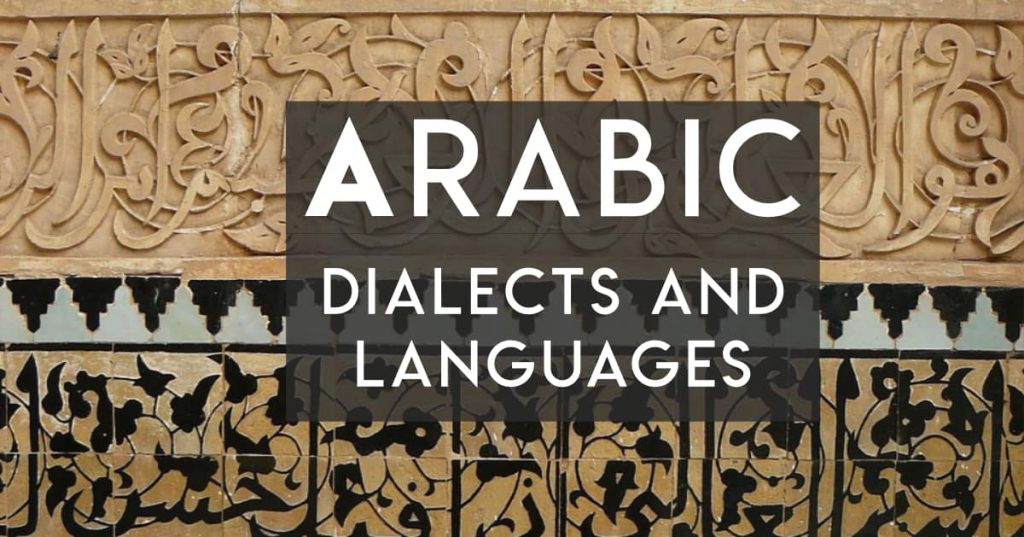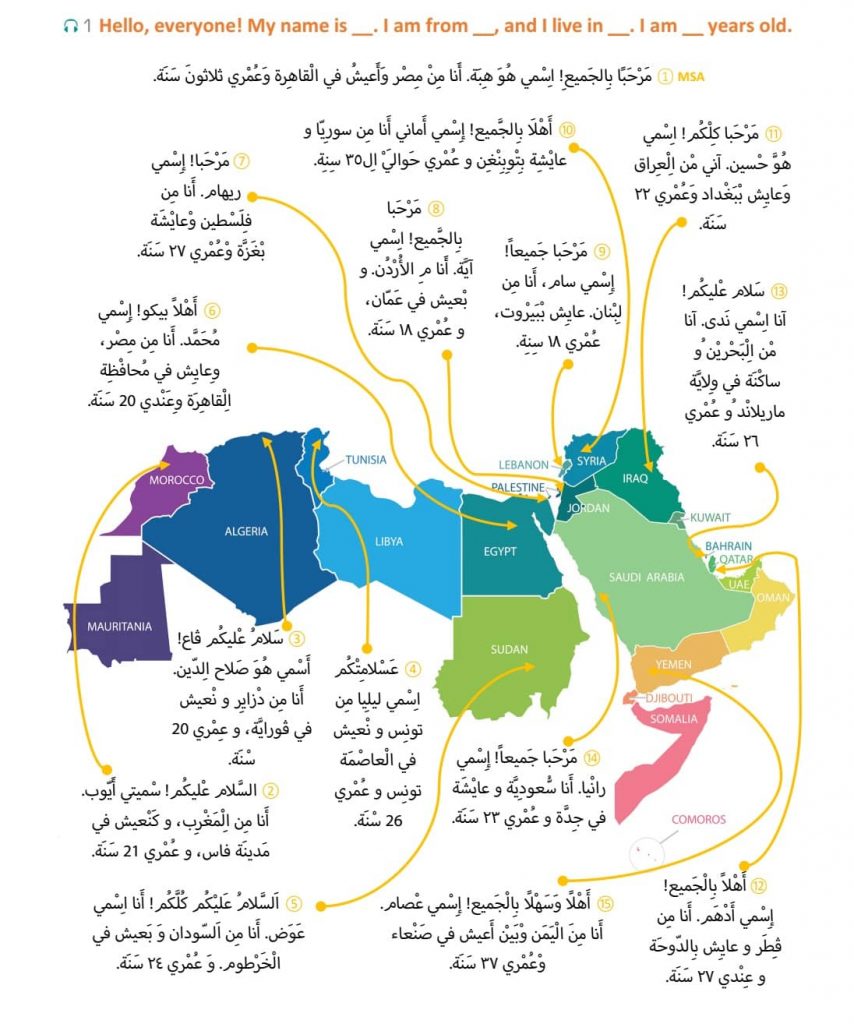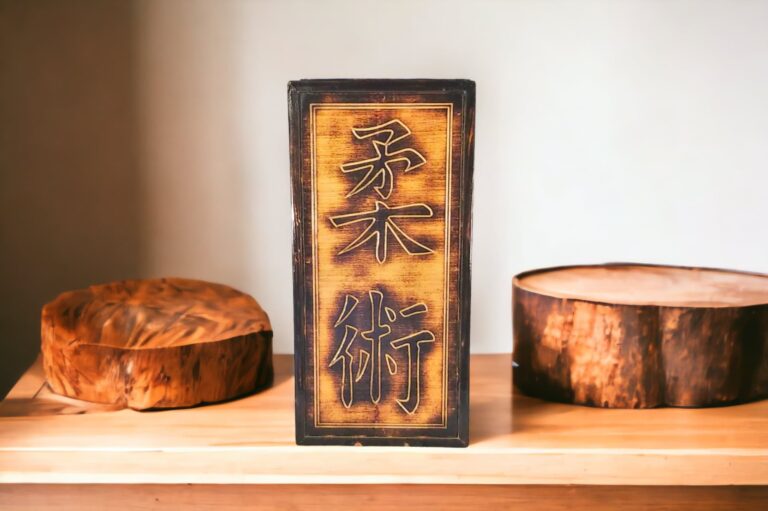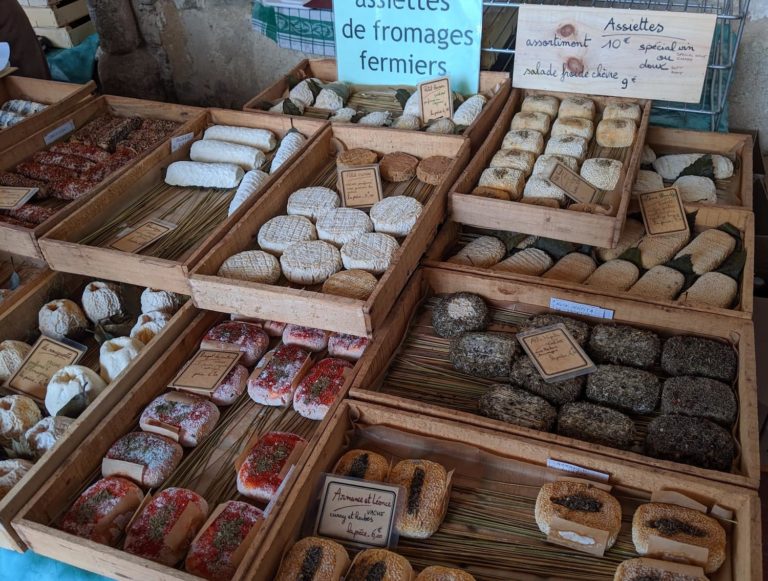Arabic Dialects Compared: Maghrebi, Egyptian, Levantine, Hejazi, Gulf, and MSA
If you want to learn to speak, read, or write Arabic as we did (we learned Egyptian Arabic) you have to choose one of the Arabic dialects or choose to learn Modern Standard Arabic.
We generally recommend learning Egyptian Arabic if you’re unsure or don’t have a need to learn a specific dialect. But it’s helpful to know how any dialect relates to all the other language forms in the Arab world.
Before deciding on learning a dialect, we wondered:
- What Arabic dialects exist and how are they different to Modern Standard Arabic?
- How mutually intelligible are the different Arabic dialects?
- Should we (or anyone) learn Modern Standard Arabic?
- Are the dialects of Arabic “dialects” or “languages”?
We found out as much as we could, and are sharing it here.

Contents
General Overview of Arabic Languages and Dialects
Bear in mind that there are quite a few definitions of Arabic dialects. Most of them overlap, but some are more high-level and some are very deep.
At the top level of Arabic dialects, there exist the following:
- Classical Arabic (the language of the Qur’an)
- Modern Standard Arabic (also known as MSA, a simplified form of classical Arabic, used in formal media and international politics)
- Spoken Arabic dialects (what you use to talk to almost anyone, all the time)
Classical Arabic is what you learn if you want to study the Qur’an. You can’t communicate with anyone with Classical Arabic other than with clergy about religious issues, although that’d be strange.
If you’re a Muslim or have an interest in religion, Classical Arabic is for you. But there’s probably quite a journey ahead of you!
Modern Standard Arabic (MSA) is what you use to communicate in formal business or political situations. Say you’re a diplomat from Kuwait and you’re visiting Sudan; MSA is what you’d use.
In everyday life, you need MSA to understand the news, to read the paper, or conference speeches.
When people say the literacy rate of the Arab world is lower than other regions, they mean that people can’t read and write MSA with proficiency.
However, MSA is not useful in day-to-day life for doing things like buying bread or negotiating the price of beef. You can do it in MSA, and many will understand, but it’ll take patience — particularly if you’re not fluent.
You use a dialect for everything in everyday life. If you’re buying sweets, hanging out with friends, ordering food, or even learning about the various sites, you do it all in the local dialect.
Arabic dialects don’t have a standardised written form, so they easily absorb words from other languages. This means that dialects can vary even within a country, and within a region, because of slang that gets borrowed from nearby countries. Egyptian Arabic has words from Turkish and even Italian (very few, though). North African Arabic gets word from nearby European languages — French, Italian, and Spanish.
See also…
- The differences and similarities between spoken Hebrew and Arabic
- How and why to learn Modern Standard Arabic
- The influence of Arabic on Farsi
What are the major Arabic dialects?

So you want to learn an Arabic dialect. What Arabic dialects exist?
Very loosely, Arabic dialects form two major groups: Maghrebi (Western) Arabic, and Mashriqi (Eastern) Arabic.
Maghrebi Arabic is spoken in North Africa (other than Egypt) Tunisia, Morocco and Algeria, Libya, Mauritania and Western Sahara.
Mashriqi Arabic is spoken everywhere else. It’s also better broken up into smaller sub-groups:
- Egyptian Arabic (Egypt, Sudan)
- Levantine Arabic (Syria, Lebanon, Jordan, and Palestine)
- Peninsular Gulf Arabic (Iraq, Kuwait, Oman, and Saudi Arabia)
- Peninsular Arabic (West Saudi Arabia, including Mecca and Medina, plus a few other regional countries).
Even though these are distinct groups, speakers of Mashriqi Arabic will be able to understand each other. As with Maghrebi, it helps if they really make an effort to speak as “standard” as possible, with a clean accent. This is easier when people are from neighbouring countries.
Nonetheless, they’re all still unique Arabic dialects because of their vocabulary, the way they’re pronounced, and sometimes even some basic grammar.
What do the different Arabic dialects sound like?
Rather than try to explain this in words, I suggest you listen to this recording on Lingualism, in which fifteen people from around the Arab world introduce themselves, say where they’re from, where they live, and how old they are.
The recording below from Lingualism’s “Arabic vs. Arabic: A Dialect Sampler” by Matthew Aldrich has fifteen people saying the same thing: “Hello everyone! My name is ___. I am from ___, and I live in ___. I am ___ years old.”
The speakers are (in order of who speaks first) speaking: MSA, Moroccan, Algerian, Tunisian, Sudanese, Egyptian, Palestinian, Jordanian, Lebanese, Syrian, Iraqi, Qatari, Bahraini, Saudi, and Yemeni.
If you haven’t studied Arabic, try to listen to different accents. Some are more florid, and some are more guttural. Some of this, of course, is just different people’s personal style of speaking.
If you have studied Arabic, it’s fun to try to listen to the specific accents and words used that are different.

Maghrebi (Western) Arabic: The language of North Africa
Maghrebi (Western) Arabic is the group of languages that they speak in North Africa, in Tunisia, Morocco and Algeria, Libya, Mauritania and Western Sahara.
If you speak Maghrebi Arabic, you can understand others who are from the same region, more or less. The closer the better. This assumes you also know French (spoken across the region) and can code-switch and mix it up the same way.
But even in two adjacent countries, basic everyday phrases can be different. For example, in Moroccan Arabic, to ask “How are you?”, you say “la bass ‘alayk?“, whereas in Tunisia you’d say “shnHawaalik?”.
Locally, Maghrebi Arabic it’s also known as ad-darija (الدارجة), which means “everyday/colloquial”. The best resources exist for Moroccan forms of the language, but that’s a good foundation for the rest.
What makes Western Arabic dialects unique is the fact that so much French and Italian is intermingled, through borrowed vocabulary and outright code-switching.
A lot of French is mixed into the Moroccan, Tunisian and Algerian forms, due to Tunisia, Morocco and Algeria once being French colonies. Most educated people in North African countries speak fluent French.
In Libya and Tunisia, a lot of Italian is mixed in, because Italy is so close.
Egyptian/Central Arabic: Egypt and Sudan
Egyptian Arabic, which is more broadly “Central Arabic”, is what people in Egpyt and parts of Sudan speak.
In Arabic, it’s usually referred to as “maSri” ( مصري), which means “Egyptian”. Locals of the region might say “Do you speak Egyptian?” in English.
Egyptian Arabic it’s mostly mutually intelligible with Eastern and Gulf Arabic but with some key differences.
Firstly, some letters are pronounced differently. For example, Gulf Arabic (or any other Arabic) has words with a j sound that are pronounced as a g in Egyptian Arabic.
Secondly, there are a bunch of local words and everyday expressions, and the accent varies quite a lot.
Even within Egypt there’s a second, distinct class of Egyptian Arabic known as Sa’iidi. It’s spoken in the South (“Upper Egypt”, due to being a higher elevation of the Nile), and even though it’s mutually intelligible to native Egyptians, travellers like us have a much harder time understanding it.
The accent of Sa’iidi is really different. It’s a bit like English from Manchester vs London.
In Egyptian Arabic, to ask “How are you?”, you say “izzayak?“
Gulf Arabic: Kuwait, Bahrain, the UAE, Qatar
Gulf Arabic is spoken in Kuwait, Bahrain, the UAE, Qatar and in parts of Saudi, Oman and Iraq. It’s a branch of Peninsular Arabic dialects, but it’s the biggest one.
Again it’s somewhat mutually intelligible with Eastern and Central Arabic, with its own pronunciation and vocabulary distinctions. However, if someone from UAE is speaking to someone from Lebanon, they both have to get a bit formal in their speech.
Locally, Gulf Arabic is known as Khaliji (خليجي).
Compared to other Arabic dialects, Gulf Arabic has relatively few resources.
In Gulf Arabic, to ask “How are you?” you say “schloonak?“
Levantine Arabic: Lebanon, Syria, Jordan Israel and Palestine
Levantine Arabic is spoken in Lebanon, Syria, Jordan, Israel and Palestine.
It’s a small region with a lot of migration, and Arabic is very mutually intelligible between these countries.
In Levantine Arabic, to ask “How are you?”, you say “keif Haalak?” or just “keifak?“
Levantine Arabic, like Egyptian Arabic, is a good one to learn if you are not particularly married to any specific dialect. In recent years, a lot of art (music, film, and TV) has come out of the Levantine region.
Levantine Arabic has a lot in common with Egyptian Arabic, and they’re mutually intelligible between native speakers, but many differences come across in everyday phrases and words.
There are also fewer resources for Levantine Arabic. But there are still a few good Levantine Arabic language resources worth checking out — we compiled a list!
Syria used to be a very popular destination for Arabic language learners to do exchanges. Unfortunately after many years of war, it’s no longer safe to go.
Similar for Lebanon. Beirut is a well-established party city and a fun destination for many people in the middle east. But as of 2020, the economy of Lebanon is not in a good state, with widespread inflation, power outages, and fuel shortages.
So Levantine Arabic gives you access to Jordan and to the Arabic-speaking parts of Israel. But it also gives you access to the huge Lebanese diaspora, many members of which live in the UK, in the US, in Europe, and in Australia.
Go to your local kebab shop and say keif Haalak? shu el akhbaar? and I’m sure they’ll be pleased.
Peninsular Arabic: Saudi Arabia
Most Saudis speak Peninsular Arabic, as do the people of Yemen, Oman and a few other regional countries in the Arabian Peninsula.
Saudis actually speak Hejazi, a variant of Peninsular Arabic. However, most Peninsular Arabic dialects are mutually intelligible, with a few accent distinctions between them. (Gulf Arabic is also somewhat mutually intelligible, but is distinct enough to get its own section.)
Hejazi is a fairly unique form of Arabic because it’s common to a region, but not a specific people. There is so much immigration to Saudi Arabia from all over the Arab world. Hejazi has a lot in common with Egyptian Arabic, so Egyptians who move to Saudi pick it up easily.
In the Peninsula, people say “How are you?” as “kayf Haalak?“, as in Modern Standard Arabic.
Other Arabic dialects
There are other Arabic dialects that don’t neatly fall into the above groupings. They’re smaller, spoken much more regionally, and less well-documented.
A few examples of other Arabic dialects are
- Hassaniya: spoken by the people across North Africa and a relic of the impact of the Behi Hassan tribes.
- Yemeni Arabic: Spoken in Yemen and bordering countries. While technically “Peninsular”, it’s difficult to parse.
- Mesopotamian Arabic: Another family near the Gulf area that’s spoken in Iraq, Turkey and even in Iran.
Unless you’re spending a long time in one region or work as an ethnographer or linguist researcher, you might find it more practical to communicate with people speaking these dialects in Modern Standard Arabic. If you stay long enough, you’ll find your Arabic just gets “corrected” into whatever the local dialect is.
Of course, this advice should only encourage you because how cool would it be to speak the language of the tribes of Beni Hassan, which featured in the film Lawrence of Arabia. It’s on my list…
Are they Arabic dialects or languages?
Because of the large differences between Arabic dialects, students often wonder whether they should be referred to as languages rather than dialects.
The reason we call the Arabic dialects “dialects is basically because that’s what the countries where they’re spoken call them. So the reason is somewhat political. The “official” language of most countries in the Arab-speaking world is Modern Standard Arabic. So that’s the language used for official announcements, the media, and in international politics.
Next to MSA, all other languages are not considered real languages even by the local people. Our teachers and friends say things like “It’s just slang” or “There are no real rules”, despite the fact that we keep getting those non-existent rules wrong.
The Arabic local languages are often referred to as dialects of Arabic because they don’t have a commonly used written form. They do exist in written form (as Egyptian Arabic often does), but much less commonly than MSA. And there’s no official body saying “Hey! That’s not how you spell that!”, unlike in France or in Israel, so spelling can be inconsistent.
Spoken Egyptian Arabic is described as an “accent” locally (لحجه), or as “slang” (عمييه). Those words are synonyms for “dialect” and “colloquial” respectfully, but people think of them in similar ways.
Are Arabic dialects mutually intelligible?
In other words, if you speak one Arabic dialect, can other Arabic speakers understand you? And can you understand other Arabic speakers?
The answer: yes, Arabic dialects are mutually intelligible… if you try.
I’ve often seen written that many Arabic languages exist along a “dialectic continuum”. In other words, it’s a sliding scale.
If you take two educated adults from Cairo and Tunisia, they will be able to understand each other by making an effort. The Egyptian will speak slowly and articulate, and the Tunisian will, being familiar with Egyptian dialect from the movies and TV coming out of Egypt constantly, know what’s going on. The Tunisian will then in turn consciously not code-switch to French, use any Egyptian words he can think of and speak slowly and more clearly.
If you, however, take a 10-year old kid off the streets of Cairo and a similar kid from Tunisia, they wouldn’t understand each other. They wouldn’t be able to simplify their vocabulary and grammar enough to make them more internationally accessible.
But if the two children from different parts of the Arabic-speaking world simplify to basics, like “milk? cookie? sweets? toys?” they will probably figure out that they have something in common, even if those words are different.
However, if you take two adults or children from Cairo and one from Beirut, they’ll be able to understand each other without making significant modifications to the way they speak. It’ll be weird pronunciation and vocabulary, but it won’t be totally alien.
We found when speaking Egyptian Arabic in Palestine or Jordan that people just spoke back in their dialect, and it all went smoothly.







This is the best over view I’ve ever read. Great work. I heard a program on this on Public Radio. This is very comprehensive. Had no idea that Arabic was actually many languages.
I second Greg’s comment below — this is the most thorough and comprehensive explainer on this topic that I’ve found. Fantastic work and truly appreciated!
Brilliant stuff! I wanted to find out if it was OK to use as salaam aleikhum if you’re not Muslim, but I’m amazed at all the other info as well. Many thanks and shukran laki!
Oh yeah. I’ve found it’s totally acceptable, and people like it!
wow! great article! I am learning the Jordanian accent and I was worried whether I would be able to understand other dialects! However, as it seems, a thorough training will allow me to able to comprehend what others in other dialects are saying.
Glad you like it! I recommend books from Lingualism for more audio stuff to learn more. Really high-quality audio and text for Arabic dialects.